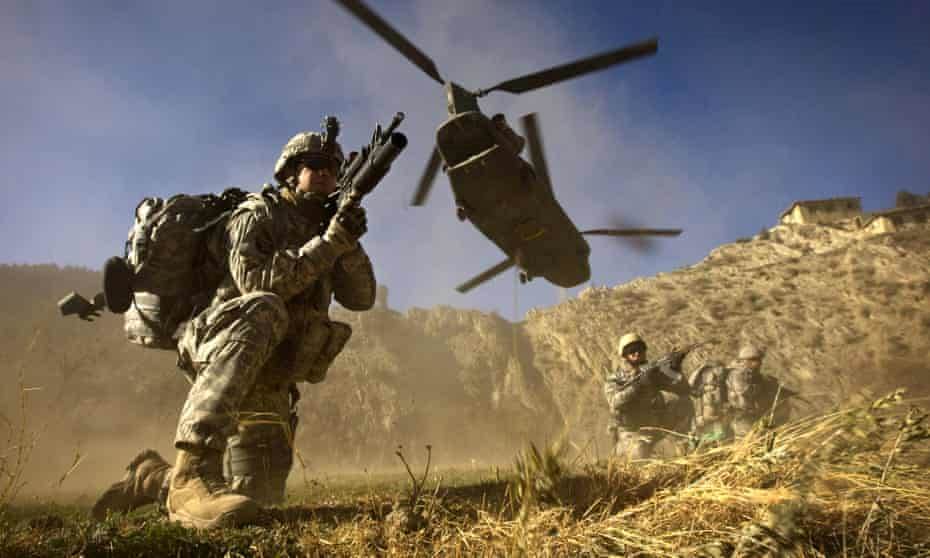Biden’s failures in Afghanistan further exposed in leaked document
In Afghanistan, before the fall of Kabul and the evacuation of US troops, where did the US President Biden go wrong?
-

US troops withdrew from an unwinnable war.
The Biden administration was unprepared to evacuate Afghan nationals who had assisted the US in its 20-year struggle against the Taliban, according to leaked minutes from a White House Situation Room meeting the day before Kabul fell.
Senior Biden administration officials were still debating and assigning fundamental actions involved in a major civilian evacuation just hours before the Taliban seized control of Afghanistan's capital on Aug. 15, 2021.
Outsiders were frustrated and suspicious that the administration held numerous meetings but lacked urgency until the last minute due to bureaucratic lethargy.
Despite the use of the word "immediately" throughout the paper, it's evident that officials were still scrambling to finish their preparations on August 14th afternoon, so there was nothing "immediate" about their actions then.
They'd just decided, for example, that local Afghan workers needed to be notified "to begin to register their interest in transfer to the United States," according to the document. They were still deciding which countries may function as evacuee transit locations and the Afghan capital was falling.
The bigger picture
President Biden was adamant about ending the country's longest war, and he declared in April that all US troops would be out of Afghanistan by September 11, 2021. President Trump had previously agreed to remove the United States by May 2021.
The horrific sights of those final minutes, with Afghans falling to their deaths from military transports and a suicide bomber killing 13 US service members and scores of Afghans at the gates of Hamid Karzai airport, haven't helped Biden's support ratings.
Thousands of vulnerable Afghans remain trapped in bureaucratic hell, fearful that the Taliban, whom they have fought for years, would hunt them down, according to a piece published this week in The Atlantic.
Later this month, Congress will appoint members to a 12-member bipartisan body to investigate the war and publish a report akin to that of the 9/11 Commission.
What's the deal?
The NSC's "report of conclusions" for a meeting of the so-called Deputies Small Group was obtained by Axios.
It brings together top aides to various Cabinet members and frequently prepares the framework for Deputies' or Principals' meetings or works out practical details for carrying out decisions already taken by their employers.
The conference was held between 3:30-4:30 pm on the afternoon of August 14, Washington time, to discuss "relocations out of Afghanistan."
Taliban fighters were approaching Kabul at the time. Senior officials from numerous agencies, including Gen. John Hyten, vice chairman of the Joint Chiefs of Staff, attended the meeting, which was led by National Security Council staffer Liz Sherwood-Randall.
What does that mean?
The meeting records show how many critical decisions were made at the last minute by the Biden administration, just hours before Kabul fell and former Afghan President Ashraf Ghani fled his palace in a helicopter.
"While we're not going to comment on leaked internal documents, cherry-picked notes from one meeting do not reflect the months of work that were already underway," NSC Spokesperson Emily Horne told Axios.
"Earlier that summer, we launched Operation Allies Refuge and had worked with Congress to pass legislation that gave us greater flexibility to quickly relocate Afghan partners," Horne said.
"It was because of this type of planning and other efforts that we were able to facilitate the evacuation of more than 120,000 Americans, legal permanent residents, vulnerable Afghans, and other partners."
Senior Biden officials from throughout the government had been meeting around the clock to deal with Afghanistan's rapid disintegration by the time the Saturday afternoon meeting took place.
The administration helped evacuate over 120,000 people from Kabul airport by Aug. 31, the President's amended withdrawal deadline.
Before US withdrawal
Troops were stationed in the area in advance of the evacuation to ensure timely arrival at Kabul airport. The administration had sped up the approval of Special Immigrant Visas (SIVs). Biden officials had also studied the possibility of other countries functioning as evacuee transit locations, which eventually led to a network that housed tens of thousands of Afghans awaiting processing.
Despite this, many crucial decisions had yet to be made on the eve of Kabul's fall. The president — and his intelligence community - underestimated the Afghan military's ability to "defend their homeland from the Taliban."
Moreover, Ghani had personally urged Biden earlier this year not to conduct mass evacuations of Afghans. He was afraid that it would indicate a lack of trust in his government.
Many outside advisors were sounding the alarm as the Taliban swept through provincial capitals heading into August.
"I kept being told by people in the [White House] the thing they were most concerned about was the optics of a chaotic evacuation," said Matt Zeller, a former CIA officer.
"They treated us like we were Chicken Little. They didn’t believe the sky was falling", said Zeller.
"On the 13th of July, we offered to work with them to help evacuate our partners," Zeller added. "We all saw this disaster coming before the inevitable occurred. They didn’t get back to us until Aug 15, the day Kabul fell."
Mark Jacobson, deputy NATO representative in Afghanistan during the Obama administration, told Axios, "That so much planning, prioritizing and addressing of key questions had not been completed, even as Kabul was about to fall, underscores the absence of adequate interagency planning."

 5 Min Read
5 Min Read








